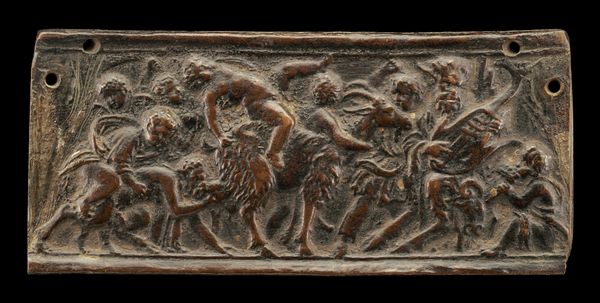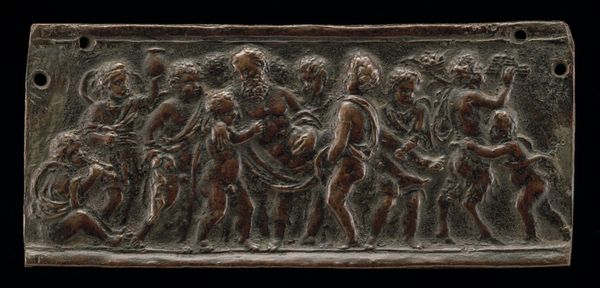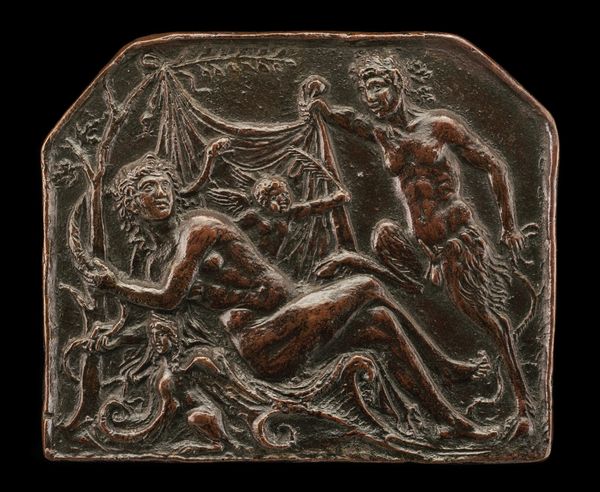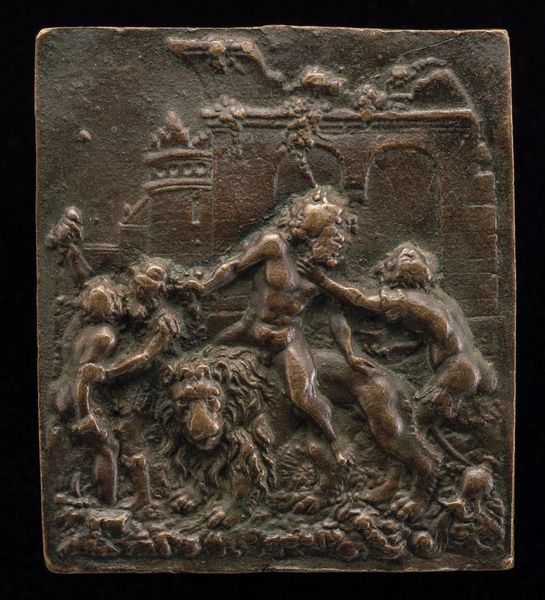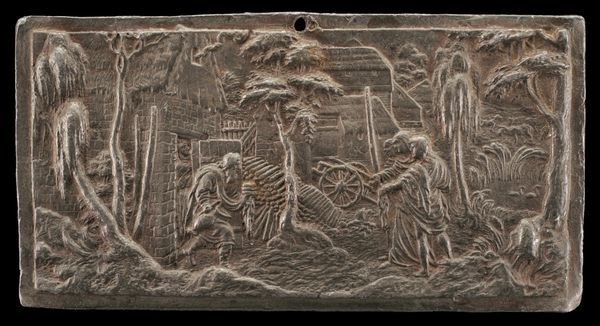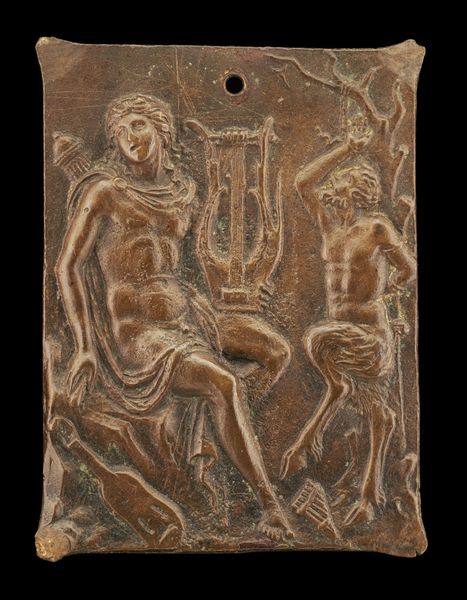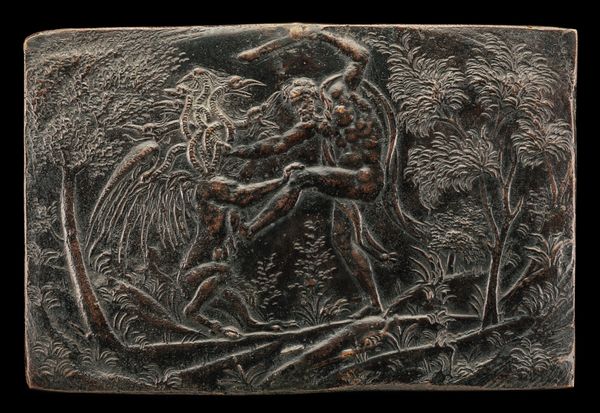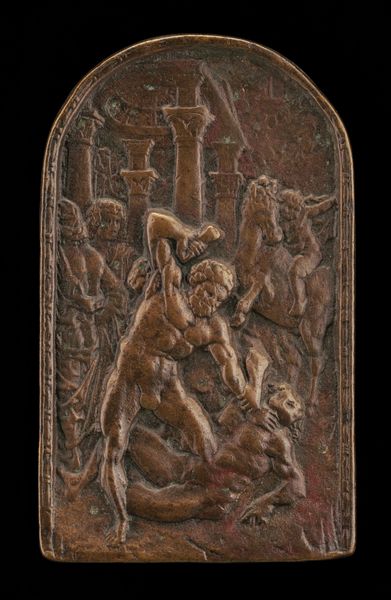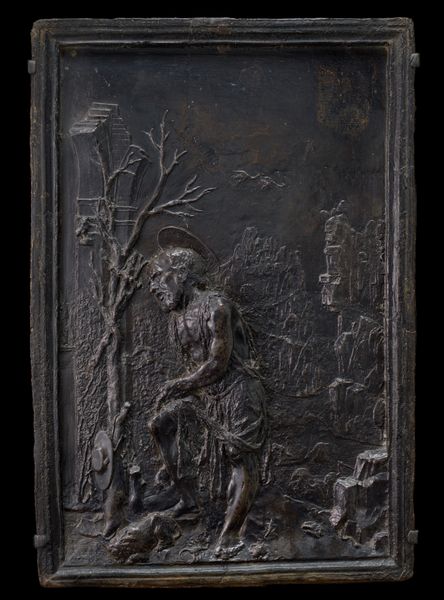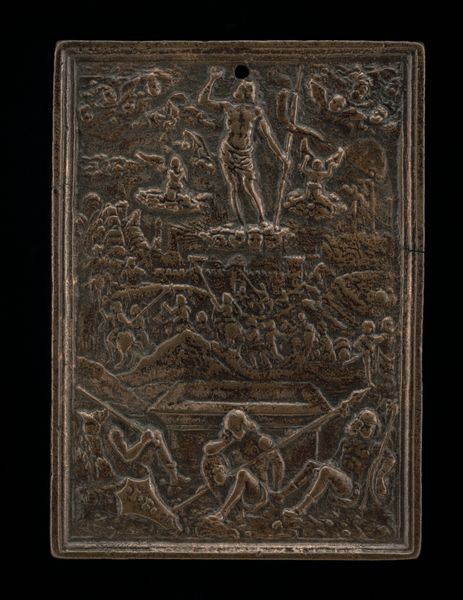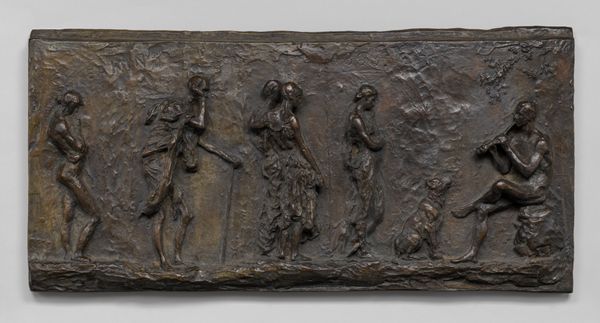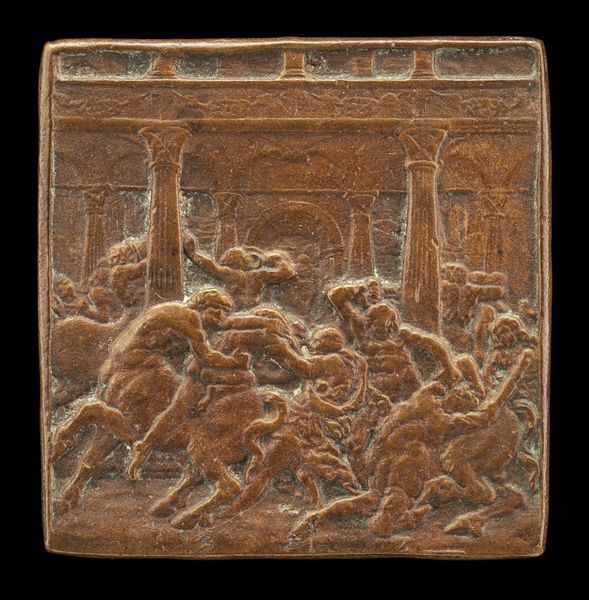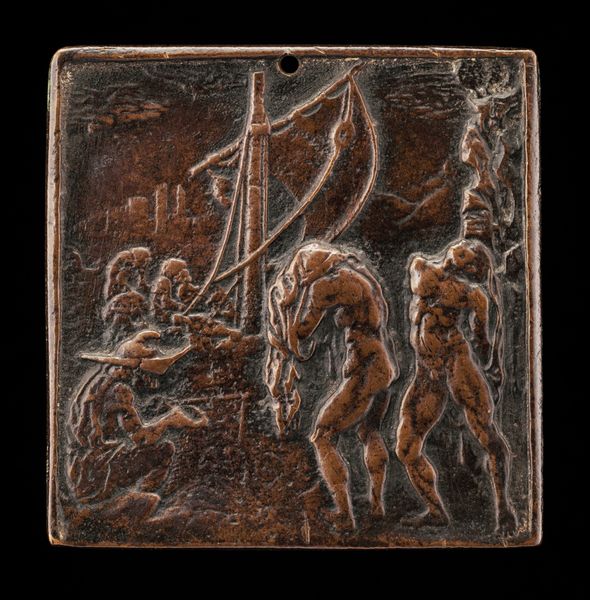
metal, relief, bronze, sculpture
#
allegory
#
metal
#
sculpture
#
relief
#
bronze
#
figuration
#
sculpture
#
history-painting
#
italian-renaissance
Dimensions: overall: 4.71 x 10.53 cm (1 7/8 x 4 1/8 in.) gross weight: 111.34 gr (0.245 lb.)
Copyright: National Gallery of Art: CC0 1.0
Editor: Here we have "Allegory of Fate," a bronze relief made around 1530 by Andrea Riccio. It feels rather heavy, both literally because it's metal, but also because the scene depicted feels fraught with tension. What do you see in this piece? Curator: Immediately, I see a compression of time and fate. Notice the figure on the far left, perhaps Chronos himself, recording events as they unfold on a shield. The winged figure wielding the staff feels primal, almost animalistic, standing astride a lion. Do you get the sense that these aren't just figures, but living symbols? Editor: Yes, I definitely see that! It feels very staged, like a theatrical production. But what’s with the veiled woman on the right? Curator: That's the crux of it, isn’t it? The veiled figure could be Atropos, one of the Greek Fates, the one who cuts the thread of life. Her presence, combined with the figure pouring something, possibly a potion, creates an inescapable sense of destiny. The pouring suggests preparation for passage, and is linked with commemoration. Doesn’t this image make you feel somewhat powerless? Editor: I can see that. So, Riccio is presenting fate not just as an event, but as a constructed, almost ritualistic process. Is that why it feels so… weighty? Curator: Precisely. These symbols – the act of writing, the potent beverage, the cutting of the thread – build on layers of cultural understanding. It's an incredibly effective method to visually distill a complex, and often feared, concept into something tangible, but ultimately beyond our control. Editor: This makes me consider that our present is connected and constantly molded by symbolic meanings from the past, that are even rooted in art like this! Curator: I couldn’t agree more, seeing these continuities really connects us more profoundly to the piece.
Comments
No comments
Be the first to comment and join the conversation on the ultimate creative platform.
